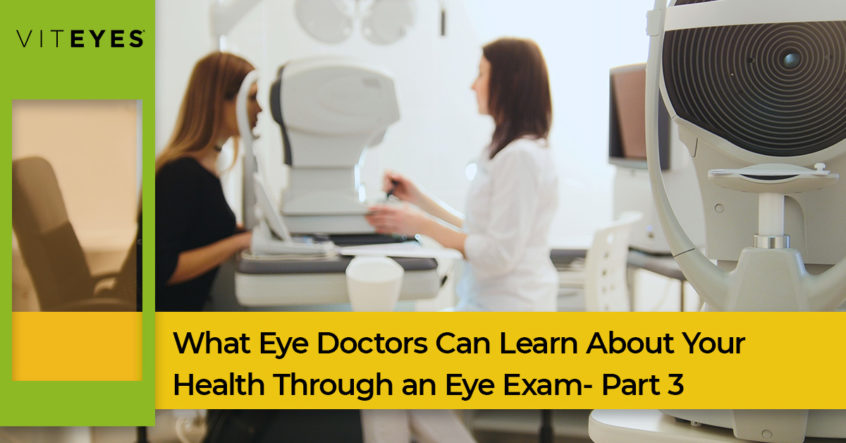Welcome back to the final installment of our three-part series on what your eye doctor can learn about your health during your routine eye exam. If you haven’t already done so, we recommend reading parts one and two of this series where we discussed some significant chronic conditions that can be identified on a simple eye exam. Your eye doctor is primarily concerned with your eye health and vision, but they have a good understanding of the relationship between chronic disease and your eyes. Here are a few more conditions your ophthalmologist may detect during your eye exam.
Sexually-Transmitted Diseases
Discovering sexually transmitted diseases (STD) on an eye exam may either be because the disease is also located in the conjunctiva of the eye, as is common with gonorrhea, chlamydia, and syphilis, or because of other indicators of systemic infection such as AIDS lesions. Because the eyes create a similar moist and warm environment to genitals, and the chances of genital to eye or genital to hand to eye transmission are high, ocular STDs are not uncommon. STDs may cause irritation to the eye or may cause vision changes. Treatment of ocular STDs is important to prevent further complications and spread of the disease. If your eye doctor detects any ocular or systemic sexually-transmitted disease on your eye exam, they will refer you to your primary care provider for formal diagnosis and treatment. For more information about how STDs can be identified on an eye exam, visit this online resource.
High Cholesterol
High cholesterol is a condition that, left untreated, results in buildup up of plaque inside the body, most notably in the blood vessels. These plaque build-ups can break free and travel causing bleeds or blockages, or they can continue to grow and cause blood vessel obstructions. Both of these scenarios may result in stroke, heart attack, or aneurysm. Much like the blood vessels in your heart or brain, the blood vessels in your eyes are also susceptible to plaque buildup and stroke, referred to as retinal strokes. A comprehensive eye exam can detect disruptions in blood flow that would indicate high cholesterol levels and indicate a need for referral to a primary care provider. For more information about how high cholesterol can affect your vision, visit this online resource.
There are several more conditions and disorders that your ophthalmologist can detect during your eye exam including arthritis, cancer, sickle cell anemia, Chrone’s disease, Lyme’s disease, Multiple Sclerosis, and drug toxicity just to name a few. As you can see, supporting your eye health by scheduling your annual comprehensive eye exam and taking eye supplements that help protect eye health are just the first steps to supporting your overall health. If you haven’t had an eye exam in over a year, now is the time to schedule one. And, for all of your eye vitamin needs, visit our online eye supplement shop today!
